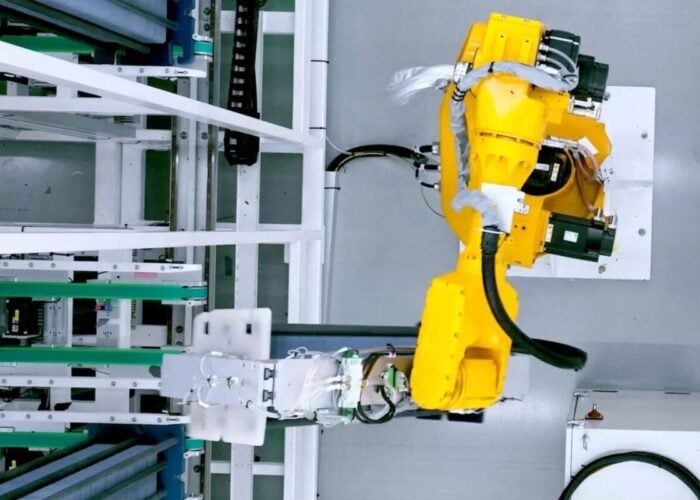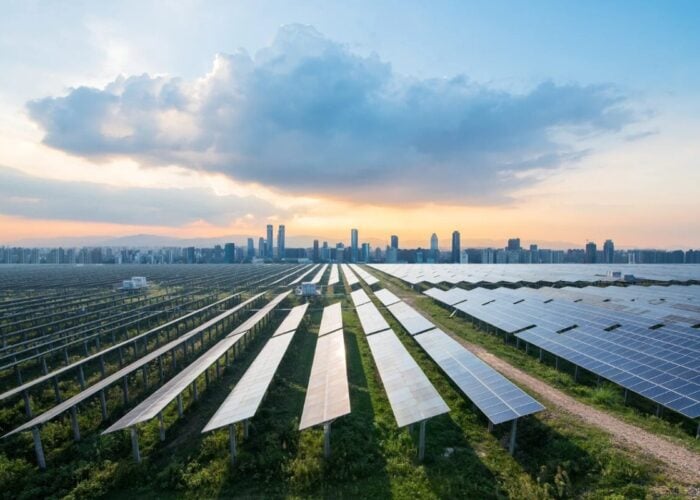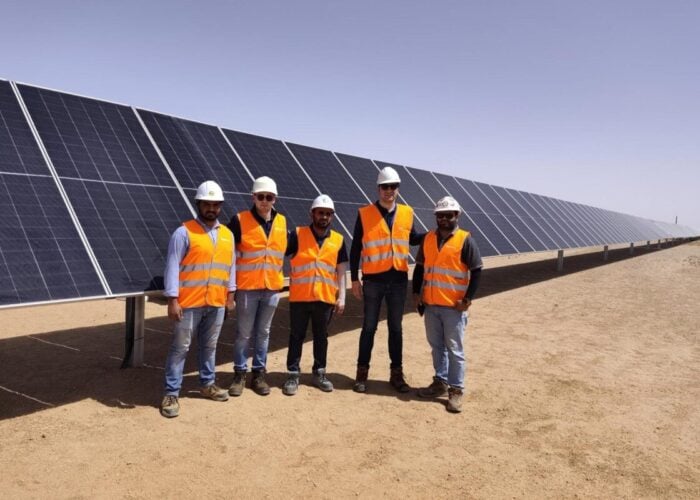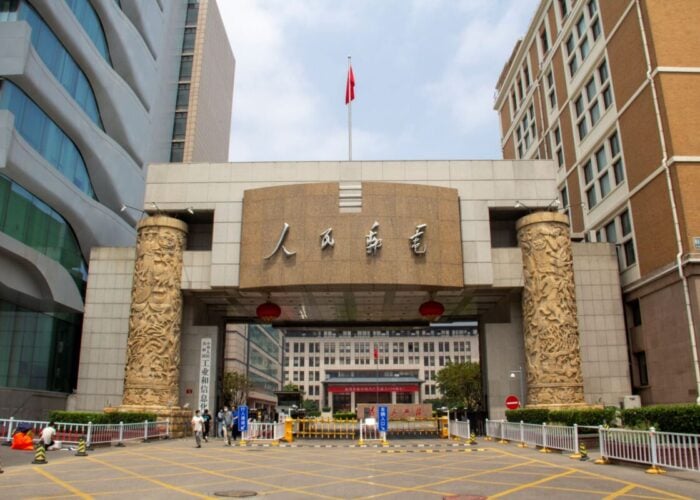The solar industry experienced another polysilicon price shock in August, as news outlets reported Tongwei halting production at its 20,000-ton polysilicon facility in Sichuan, China, following flood warnings.
While production is expected only to be temporarily offline, this latest development will only raise the price hike potential for polysilicon. Floods are the latest unexpected disaster to strike the upstream material industry, since explosions on 21 July at GCL-Poly’s production facility in Xinjiang took 50,000 tons of production offline for an estimated three to nine months.
Try Premium for just $1
- Full premium access for the first month at only $1
- Converts to an annual rate after 30 days unless cancelled
- Cancel anytime during the trial period
Premium Benefits
- Expert industry analysis and interviews
- Digital access to PV Tech Power journal
- Exclusive event discounts
Or get the full Premium subscription right away
Or continue reading this article for free
Before that, it was Daqo New Energy experiencing minor fires from a gas leak on 1 July, which took 6,000 tons of production capacity temporarily offline.
With these latest developments, Clean Energy Associates (CEA) expects significant impacts on both pricing and supply in the short term, with the bulk of any supply constraints culminating in Q3 and Q4 of 2020 and lasting into the first half of 2021.
Silicon is obviously a critical component of solar cells. Technical progress in wafer production and continuous improvement in efficiencies have reduced consumption to less than 4 grams per watt, a third of what it was 15 years ago, according to Bernreuter Research. But the world now consumes nearly half a million metric tons of solar-grade polysilicon a year, making it a multi-billion-dollar industry.
In the short term, we expect pricing to fluctuate wildly as producers begin releasing spot pricing only. Price is affected by supply and demand, and incremental demand, too, can have a big impact on price.
LONGi posted a notice on its pricing boards in August pegging the price of its wafers to polysilicon pricing. We expect this trend to continue as polysilicon producers abstain from long-term fixed-price supply deals in the short term and wafer producers specify routine pricing renegotiation in line with market trends.
We project pricing to remain at elevated levels for at least six months as upstream suppliers adjust to downstream cell and module production capacities. We expect module prices in China will increase in the medium term and hold constant because of recovering demand and the temporary supply disruption.
Despite this series of unfortunate events in the industry, we estimate there to be an ample supply of solar-grade polysilicon available for the sector, and pricing increases to be a result of unfortunate timing on industry slowdowns and suppliers looking to recover margins following record lows in pricing.
Polysilicon producers typically make three grades of product: low quality for multi products, high quality for mono products, and highest quality for the semiconductor industry. Our contacts at GCL indicated that the 50,000 tons of offline production capacity is split about 50-50 between multi- and mono-grade polysilicon production, reducing the full impact on PERC products which constitute a majority of the solar market.
We find an ample supply of solar-grade polysilicon exists in both domestic and international markets. However, some non-China supply will need to be imported leading to higher pricing until GCL recovers production, expansions come online, and reactionary buying activity subsides.
Even with wide availability, price hikes are expected to persist as polysilicon suppliers claw back some of the margins which had been steadily eroding over 2019. Poly suppliers have moved from long-term fixed price contracts to long-term contracts with monthly price adjustments, offering them more opportunity to do this.
While GCL-Poly now has 50,000 – 70,000 tons of capacity offline, the supplier’s utilisation had reportedly been declining since 2017. Polysilicon sales to customers outside the GCL group umbrella were cited at around 39,000 tons in 2019.
Assuming 50% of polysilicon sales were for mono-grade products and assuming the supplier’s 10,000+ tons of underutilised capacity can be used (again assuming 50% is for mono ingots), there is only an approximate 15,000 tons net loss to mono-grade polysilicon available to suppliers.
If there are increased supply concerns, GCL-Poly and other suppliers can defer some maintenance operations to boost short term production, further reducing the supply deficit. While news reports suggest industry-wide factory inspections and emerging COVID-19 cases in Xinjiang (where the majority of polysilicon production occurs) could lead to further supply shortages, we do not believe these developments will meaningfully impact producers’ ability to make polysilicon. Facility inspections do not necessitate stopping production, and polysilicon production is non-labor intensive to begin with.
Local media outlets in China reported a similar supply shortage in February after factories were taken offline for environmental impact studies stemming from new environmental policies. Input prices for modules temporarily rose, but the overall price trend for modules continued to decline month-on-month, with wafer and cell supplies remaining largely unimpacted outside of normal COVID-19 factory closures.
Overall polysilicon oversupply expectations by Bloomberg NEF for this year were between 21% and 54% following the slowdown in Chinese production during the first half of the year, which should provide ample room to continue sourcing the raw material in the long run. However, underutilised production and unforeseen events disrupted the narrowing gap in polysilicon production and consumption.
Chinese news outlets cite GCL-Poly as expecting to add 20,000 tons of new capacity this year, with Tongwei adding 10,000 tons and Dongfang adding 30,000 tons — more than offsetting the impacted capacity once these facilities can be brought online. These players anticipate the rapid development of solar capacity in China will lead to additional polysilicon demand starting in 2021, and some are planning further expansions despite the decline in industry utilisation.
Tongwei is already planning to add 35,000 tons of new capacity in 2021 and around 70,000 tons each year in 2022 and 2023. However, other suppliers have not yet announced longer-term capacity increases, possibly due to fears of overshooting market demand and leading to another cycle of lowering utilisation and risking eventual factory closure.
Looking at the broader polysilicon market, in 2018 China’s polysilicon production capacity totaled around 371,000 tons and an additional 120,000 tons of expansions were expected to be brought online in 2019, according to the Research and Markets Group. China also imports around 150,000 tons of polysilicon per year. These supply figures suggest GCL-Poly’s offline facility represents around 7 to 8 % of normal Chinese polysilicon consumption, and not 10 % of global capacity some news outlets suggest.
In addition, despite the heavy growth of solar manufacturing capacity in China, many of these expansions are slated for the end of 2020 or 2021, with indications they are likely to be delayed until demand rebounds. Supply is unlikely to be heavily impacted, as the current offline supply can be replaced by imports from Europe and South Korea, and the bulk of new solar production capacity is likely to be delayed.
Tomorrow: How long can these prices go on?
Joseph C. Johnson is a Technology and Quality Senior Analyst for Clean Energy Associates (CEA). North American-owned and based in Denver, Colorado and Shanghai, China, CEA’s 120-plus professionals provide project developers, independent power producers, EPC firms, financial institutions, and others with solar PV and battery storage quality assurance, supply chain management, and engineering services.






